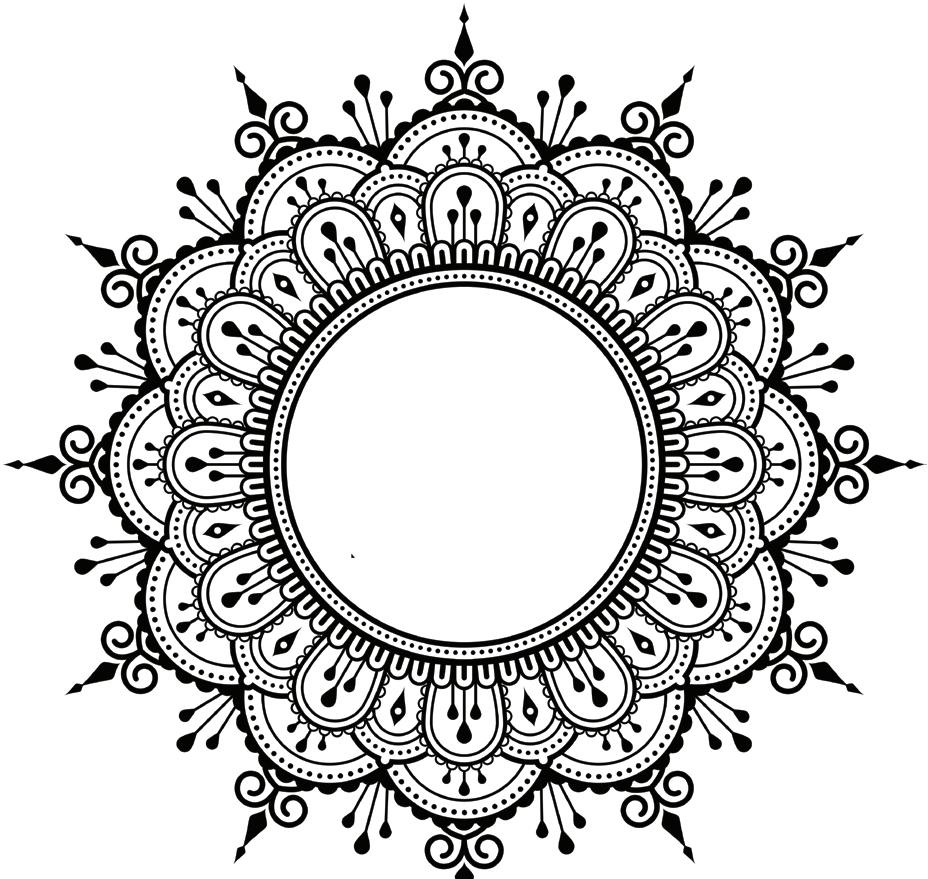
12 minute read
India A Z
from 2020-08 Melbourne
by Indian Link
Even as the world around us has turned decidedly grimmer, our Independence Day special is a light-hearted take on all things Indian.
We asked our readers to send us what screams ‘India’ to them, and we were flooded with responses. An incredible variety that reflected the vibrancy and dynamism of the country (and to be honest, made us a bit sentimental too!)
AMUL
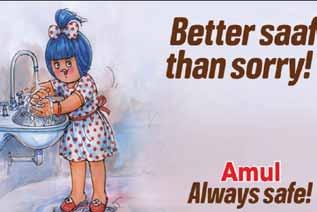
As far as brands and marketing go, India's Amul butter tops it all. With its tagline 'the taste of India', this 'utterly butterly delicious' dairy item is a household name. Amul's branding has been part of India's cultural landscape for decades. Its innovative advertising is one of the longest running campaigns in the world and it continues to appeal and assure. Cheeky and amusing, the Amul girl has managed to keep her fan following intact since her inception in 1967 by Sylvester De Cunha, Eustace Fernadez and Dr Verghese Kurien. India's most recognised mascot is used to mobilise comments on all national and political events with its signature humour.
The diversity of our list clearly indicates that emotions ran deep and wide. Sometimes expressing them needed the dexterous use of Hindi too. Kyon ki kuch shabd Hindi mein hi achche lagte hain!
From patriotic fervour to favourite foods to savour, from the spiritual to the sublime, from traditions to trends, from the heart of India to its hidden corners, we explore everything uniquely Indian from A to Zee.
If any or all of them put a smile on your face, our job is done!
Big, beautiful, soft and fluffy deep-fried bread paired with scrumptious tongue tantalizing chanas
If this doesn't scream orange, white and green (and don’t forget the blue!)
I don't know what else does. Some argue that beer is the life blood of a nation, others insist that sport is. With India, it all boils down to two simple things - good food and good times. Two great things matched only by the soul satisfying union of Bhature and Chane. Soul food, one could even call it! Lavish textures and sumptuous flavours are what make bhature and chane an icon of Indian cuisine.
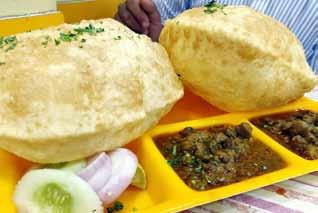
Everyone loves a good Indian curry. A great way to present meat or vegetable dishes, a generous variety of spices and herbs go into the making of each. There’s a curry from possibly every state in India, from Uttar Pradesh right down to Kerala. The ingredients and their permutations and combinations - and the delicious resulting flavours - are so many in number that you could eat a completely different style of curry every night of the year (just ask ScoMo!) If you haven't tried an Indian curry yet, what are you waiting for? Wait, IS there anyone who HASN’T tried a curry yet…?
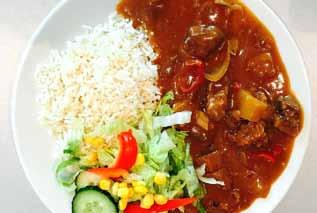
Democracy
There are a bunch of Indian items that can come to mind, from delicious dosas to the enticing dandiya, but there’s an important D word we too often overlook: democracy! It’s easy to take for granted that India is the world’s largest democracy, but it also means that all citizens are seen equally irrespective of religion, gender, or caste. In recent years, there has been a wave of disagreement about how (or whether) this has been put into practice. In times of doubt like this, I find comfort in looking back at the founding ethos of India, one enshrined in equality, solidarity, and another important D worddiversity.
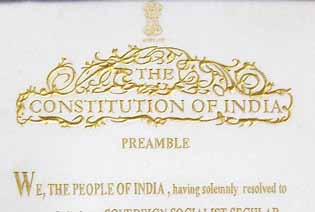
Education
E is for education. Often mistaken for Literacy! My motherland’s denizens have a visceral faith in the power of education to transform lives. It is heartening that the poor share the education ethos with the rich. If anything, perhaps with more conviction! Whilst all of the above is highly encouraging, Indian education needs to foster a more civil public discourse, the cultivation of a scientific temper and rising rationality. For far too long, there has been an emphasis on rote learning rather than independent thinking.
I am optimistic that Education will be the underpinning of India’s era as one of the Superpowers of the next 100 years.
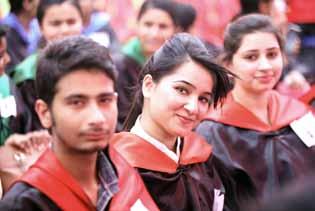
Festivals
Ganga
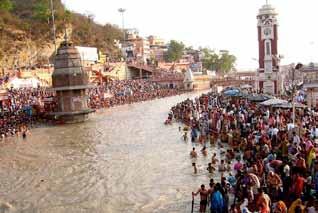
Himalayas
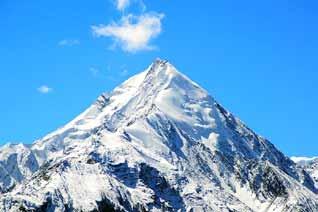
Like most of us, my best childhood memories are of the festivals that were celebrated in the community with much enthusiasm and vigour. Those were such fun times - as we took part in all festivals regardless of their religious background! Some of the major festivals went on for days and I used to get involved with various cultural activities such as stage performances, dances, sporting activities etc with my mum. Of course no festival starts or ends without food! Festival-Food-Fun-Fair-Friends 'n' Family. Nothing brings people together like festivals. Festivals help us to keep connection with our culture, and to preserve it.
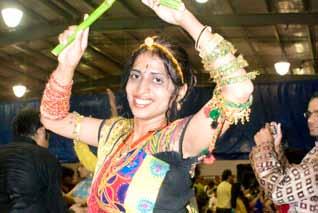
MANISHA ChaubalMENON (Melbourne)
ANIL BHATIA (Melbourne)
The longest river in India, the iconic Ganga (Ganges) supports millions of lives and livelihoods along its long course. On its route after it has descended from the Himalayas, Hardwar and Hrishikesh are must-visit holy spots for Hindus. Crossing the majestic river in the literally swaying-in-the-wind Laxman Jhoola, as well as by an equally rickety motorboat, the huge expanse of the river and the strength of its current always stunned me. The freezing temperature at Har Ki Paudi is amazing even on hot summer days. Fond memory – taking the traditional dupki (dive) with my brand new bride. Fascinating Ganga Maiya.
Straddling the border of the world's two most populous nations lies the mightiest of all natural landmarks on earth, the Himalayan mountain ranges. It was created by the collision of tectonic plates when the Indian plate merged with the Eurasian plate over 70 million years ago. My personal experience with the Himalayas involves the time I spent in the hill station city of Shimla, capital of India's Himachal Pradesh. I used to wake up every morning to the sight of vast snow-covered peaks while still experiencing life in an urban environment. I shall never forget the time I spent in my great grandmother's house nestled at the foot of the mighty Himalayas.
RONIT JABBAL (Melbourne)
India Gate
ROHIT ALOK (Canberra)
Having been born in Delhi, but brought up in Bombay, one of the most common mistakes I made as a child was to call the Gateway of India, India Gate. As a 10-year-old up until now, I always wondered why I confused the two symbolic structures?
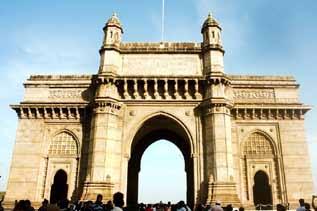
Was it the memories of those ice cream trucks? Rolling on the lush green lawns? Or watching the Republic Day celebrations with pride.
In hindsight, my attachment to this icon is perhaps bounded by family-centered sentiments. I distinctly remember them being memorable family excursions and watching other families also enjoying themselves.
MEENAKSHI SHAHI (Melbourne)
Jugaad
This one iconic word is what keeps India going. We don't believe in design or planning: when push comes to shove, we somehow manage to get things done. You ask how? Jugaad!
Some may call it a derogatory term for improvising, but we take no offense. Hey, we wear our jugaad -a-bility with pride.
We'll do the job but don't need the tools. Want to talk while riding on your bike but don't have headphones? Simply wedge the phone between your face and helmet.
Jugaad is not a fallback or alternative to the proper way of doing things. Often it is the only way of getting things done.
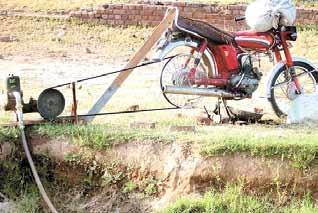
Lehanga Choli
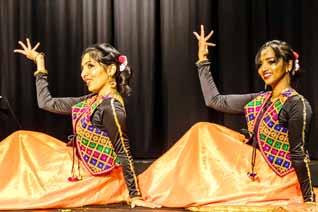
My favourite shopping trips of the year were always for those majestic, embroidered, colourful lehengas with their matching cholis.
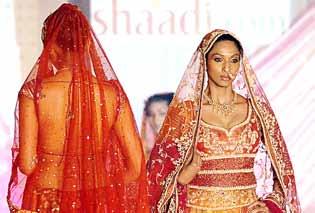
Every year, I would steal gold bindis from my mum’s drawer (sorry, Mum!) and go to M Block Market in Greater Kailash II in Delhi to pick out lehengas. Best of all, they would suit every occasion, whether it was the wedding season, Diwali, or even for Dusshera. Lehenga cholis are such a graceful symbol of celebration, of family, of coming together as a community to rejoice. To me, wearing one of these is inherently associated with happiness and good memories.
SHANIA O’BRIEN (Sydney)
M is for mango... but not the supermarket kind. It’s the childhood summertime ritual of going to the fruit-wallah with Baba, and sniffing the top of each mango deeply to select the ripest and juiciest ones from the pile. M is for that magical aroma.
It’s about raw mango robbery from the neighbour’s tree, and then biting into that shudder-inducing sourness, and those pleasurable bellyaches (from eating too much mango or laughing too much with friends, I don’t know). M is for that masti. It’s about the discovery of the last little bit at the bottom of Ma’s mango pickle jar, and realising that you can indeed bottle time. M is for those memories.

Abdul Kalam. The missile man of India. The man who propelled India into the elite space club. The man who everyone unanimously refused to hate - the people’s president. Kalam shared his vision of a technological India and inspired many to embrace science for the general welfare of the nation. Among the millions he inspired, I humbly present my tribute to the great man. While Kalam's unending list of scientific achievements and honorary awards come to mind for others, Indians embrace his innocent smile which, even after his demise, still has not and never will fade from our hearts.
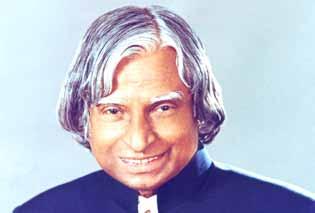
JUDE VARGHESE (Adelaide)
Dancing, or Naach gana as we call it, is India's favourite pastime. No Indian event or celebration is complete without some form of dancing, whether Bollywood, classical, traditional, DJdriven or some drunk uncle balancing a drink on his head. We dance for weddings, during cricket, at birthdays, on the street, in the pool, even while driving. We made TikTok popular with majority of its viewership coming from the subcontinent. What kind of content did we add to these social platforms? You guessed it - dancing. Aunties dance; kids train to shake a leg; dolled up girls show sexy moves; heck, we even got David Warner grooving with his family.
Onam
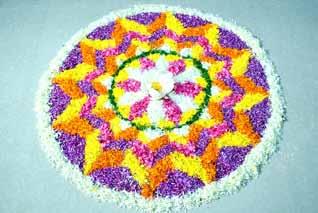
Mythologies always amuse me. Onam, a cultural festival from the state of Kerala, recalls a dream-like egalitarian country, ruled by a remarkably just, but Asura king. Even Devas, the Gods envy the prosperity he brings to the country.
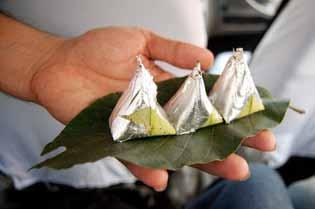
Qawwali
I am fascinated by the way mythologies are intentionally woven into the social fabric to maintain peace and tranquillity. To me, India is beautiful because its every nook and corner is vivid with myths and stories. As a cultural studies student, it is lovely to see how the Indian diasporic community celebrate these stories and festivals and recreate our rich cultural roots. As we celebrate Onam starting from 22 August, I wish everyone a happy Onam.
NIRMAL JOY (Sydney)
Relationships
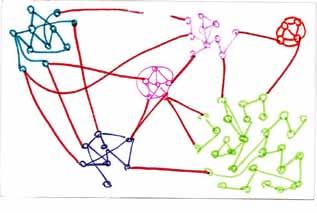
Rishtey-naatey. There’s perhaps very few other words that embody the spirit of being uniquely Indian. Growing up in India we have all experienced an abundance of rishtey-naatey. Our relationships were not limited to our immediate family and friends, but they extended to relatives and friends that we met at our 1000-2000 guest weddings, which in turn were not necessarily in our town of domicile but all across India. Even today we savour our relationships that were made during train journeys. No wonder we never felt the lack of social media and the need to invent a Friendship Day!
Just the word brings memories flooding back of friendships (and perhaps connections that led to girlfriends) at the nukkad, neighbourhood corner, the epicentre of all breaking news! How I wish we had this culture in Australia. We would not need WhatsApp and Facebook to learn the latest gossip or acquire the latest news. The famous Indian immune system was perhaps enhanced when the Paanwala bhaiya with his long thick moustache used his fingers to apply chuna, kathha and various other condiments that made what Paan is – an explosion of lovely flavours and tastes – the epitome of after dinner mint!
Sachin
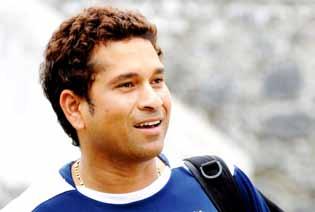
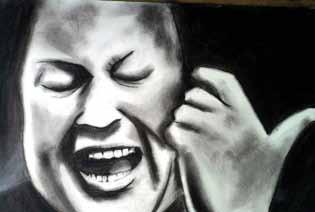
India, hunger and Sachin Tendulkar are inseparable. That's why Allan Donald once said, "I don't think I've seen a hungrier batsman than Tendulkar."
India in the late '80 and early '90s - a country of 600 million rife with terrorism, corruption, sectarian violence, drought - was in labour pains for a hero to be born.
I first saw Sachin in 1991, on an old B&W TV. His boyish charm, humility and dreamy demeanour taught India to go beyond religious and linguistic divides, and made dreaming affordable for teenagers like me. Tendulkar will always remind me to dream, and to focus.
For me, Qawwali is the reggae of the Indian subcontinent. Infused with romance and soul, I loved it from the day I saw Nusrat Fateh Ali Khan croon the song Afreen Afreen on the television screen. Even without music videos, it was a delight to hear it as a teenager when a Sufi band from across the border visited our school, and when a kurta -clad young man busted a tune in the middle of Delhi Haat. My now-husband played an original Nusrat qawwali in his Sydney apartment on our second date… and the rest is history.
SUKHMANI KHORANA (Sydney)
The name Tata is synonymous with quality and reliability. Getting a Titan watch as a gift from the parents was a badge of honour worn proudly. A jewellery from Tanishq for the wedding was a must. In school, I remember learning about India’s first planned industrial city Jamshedpur, founded by Jamshetji Tata. Whenever I visit India, in the kitchen I see Tata tea, coffee and spices from their brand Tata Sampann. It is hard to fathom that a company that started as a small trading company in 1868 by Jamshetji Tata, now has more employees than Toyota, Coca Cola, Facebook, Microsoft and Google combined.
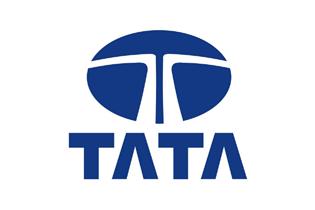
GAYATRI
Unity
Trailing the colours of the national flag - Orange, White and Green - let's stand together for unity.
Let us say with pride: Hindu Muslim Sikh Isaai, Aapas mein hain Bhai Bhai.
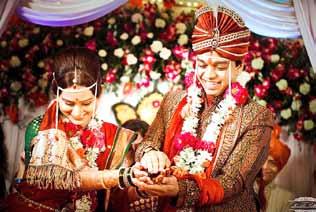
Let us not take our independence and freedom for granted.
Let's take a stand against divisive forces in our society, and forge a common path to peace and prosperity. May this Independence Day fill our lives with health, happiness and peace. On this special day, here's wishing our dreams of a new tomorrow come true.
Jai Hind!
The letter X is a tough one but there’s one iconic word that I’ve recently learned from India that starts and ends with X - Xerox. Currently homeschooling, I hear this term frequently. Every time I need to photocopy something, Mom and Dad say, “Xerox kar lo”. Had NO idea what that meant, till they explained it to me. Apparently the first photocopying machine that became famous in India was called Xerox. The branding was so strong that people associated photocopying with Xerox. The name stuck so much that everyone now calls every photocopy machine Xerox, and even make a verb out of it, as in ‘Xeroxing’. Now when they tell me “Xerox kar lo” I know exactly what to do.
This is a phrase that evokes multiple emotions no matter which part of the world an Indian lives in. Its origin is traced to 1875 in a poem written by Bankim Chandra Chattopadhyay to praise Mother India. It raised a feeling of nationalism and became an integral part of the Independence movement. The poem was first sung by Rabindranath Tagore in 1896. It subsequently became the national song of India in 1950. The phrase itself has two elements that I respect and revere: mother and country. I still feel goosebumps whenever I hear this phrase. I absolutely love musician A R Rehman's adaptation of it in the song Maa Tujhe Salaam – it never fails to leave a profound impact.
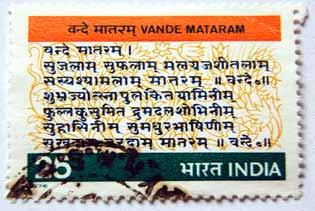
Weddings
If you haven't had the pleasure of being a part of a big, grand Indian wedding, you’re missing out! Spanning anywhere between three days to over a week, this grand celebration of love becomes a perfect amalgamation of tradition and modern culture. You’re exposed to Bollywood music and dance, venues decorated in a variety of colours, and of course, Indian food at its finest. It’s also a beautiful experience to share the celebrations and ceremonies with the hundred(s?) of other wedding attendees. It’s an event that everyone should be a part of, at least once in their lifetime.
Yoga - it is India’s gift to the world for healthy living. It’s a form of exercise that’s rejuvenating for both the body and the mind. It boosts strength, flexibility, immunity, posture…

There’s even an international day to celebrate it! In my opinion, yoga is a great example of how ancient techniques used by our ancestors are now creating a huge impact around the world. (Of course, our generation can be stubborn, and we’ve only recently started to warm up to it.) Let’s hope we don’t end up learning all our ancient techniques from western culture!
Premal
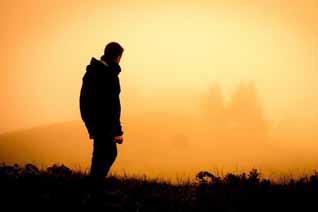
The rich grainy soil was an earthy brown - there was the distinct essence of smoke and pashmina that wafted to me. As the robust Indian earth drifted through my hands it reminded me of the vibrant and iconic culture that had been birthed upon the very place I was standing. The decadent taste of the spinach which had been cultivated nearby, the ruckus of fanatical truck horns mixed with tires treading across the barren dirt and the pitter patter of children running around outside their houses. So much beautiful history had been forged upon this ground and despite the crudeness and roughness of it, whatever happened here was something to marvel at.









